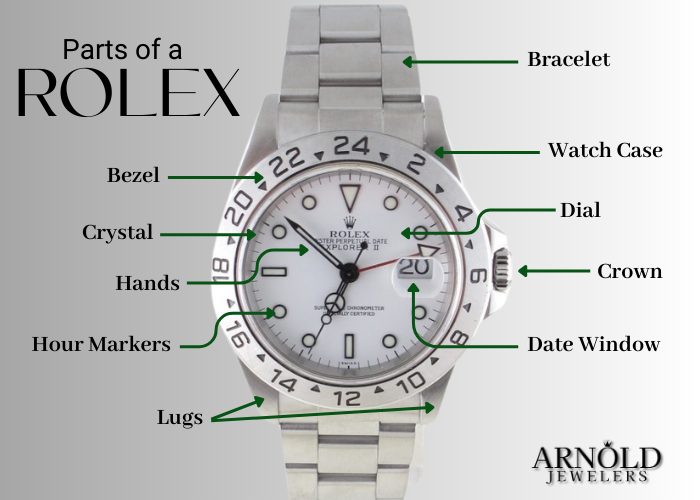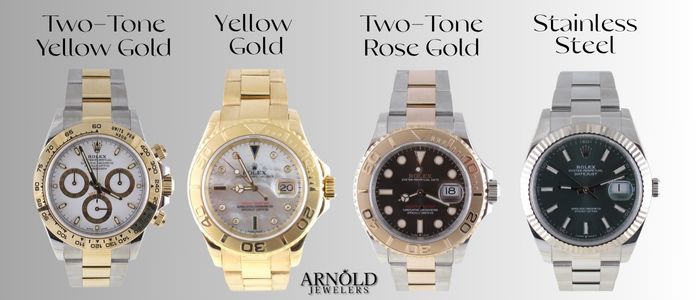The Parts of a Rolex Watch: Understanding the Components and Movements

Ever wondered what makes up the parts of a Rolex? No, we’re not talking about the sizeable price tag (though that’s a fascinating topic for another day). We’re diving deep into the intricate world of Rolex watch anatomy, exploring the components and movements that make these timepieces legendary. Prepare to be amazed by the micro-engineering marvel that sits so elegantly on your wrist.
The Heart of the Matter: The Rolex Movement
Forget quartz—a Rolex beats with a mechanical heart. The movement, the engine of the watch, is where the magic happens. Think of it as a miniature, meticulously crafted orchestra of gears, springs, and levers working in perfect harmony. Rolex is renowned for its in-house movements, meaning it designs, manufactures, and assembles them itself. This dedication to vertical integration allows it to maintain unparalleled quality control.
These movements, like the famous Perpetual rotor, are self-winding. That means as you move your arm, a weighted rotor spins, automatically winding the mainspring and storing energy. No batteries needed! It’s a testament to human ingenuity and a key factor in the enduring appeal of mechanical watches. Understanding the Rolex movement is understanding the very soul of the watch.
Pro Tip: If you don’t wear your Rolex daily, keep it on a watch winder. This will help prevent the watch from stopping and having to be reset.
Parts of a Rolex: A Symphony of Small Wonders

Beyond the movement, a Rolex is a complex assembly of specialized parts. Let’s break down some key players:
-
The Case: This protective shell houses the delicate movement. Crafted from robust materials like Oystersteel (Rolex’s proprietary stainless steel), Gold (Yellow, White, Rose Gold), or Platinum, the case is both beautiful and functional.
-
The Dial: The face of the watch, where time is displayed. From classic baton hands to intricate complications, the dial is where the watch’s personality shines. Rolex has a huge array of dials made in different materials and colors. The personalization options are endless.
-
The Crystal: Protecting the dial is the crystal, typically made from scratch-resistant sapphire. It’s like the window to the soul of your Rolex.
-
The Bracelet: The band that secures the watch to your wrist. Whether it’s the iconic Oyster bracelet, the elegant Jubilee, the prestigious Presidential, the luxurious Pearlmaster, or the comfortable Oysterflex, the bracelet is an integral part of the watch’s aesthetic and comfort. Read more about Rolex Bracelets here.
-
The Crown: This small but mighty component is used to wind the watch (if necessary), set the time, and adjust any complications. It’s often adorned with the Rolex crown logo, a symbol of the brand’s prestige.
-
The Bezel: The ring surrounding the crystal. It can be purely decorative, or it can serve a functional purpose, such as tracking elapsed time on a dive watch. The most notable bezels earn nicknames such as: Batman, Pepsi, or Rootbeer. Rolex has several variations of bezel styles and colors.
-
The Clasp: The mechanism that secures the bracelet around your wrist. Rolex clasps are known for their durability and security, even during active wear.
-
The Date Window: A small aperture on the dial that displays the date. This is a common feature on many Rolex models, adding a touch of practicality to the timepiece.
Each of these Rolex parts plays a crucial role in the overall performance and longevity of the watch. They are designed and manufactured to the highest standards. This ensures that your Rolex can withstand the rigors of daily wear.
A Material World: The Metals of Rolex

Rolex doesn’t just craft intricate movements; they are masters of material science too. Their commitment to quality extends to the very metals they use. Oystersteel, a proprietary 904L stainless steel, is a cornerstone, prized for its exceptional corrosion resistance and durability – it’s tougher and shinier than your average stainless.
Of course, the allure of gold is undeniable, and Rolex works exclusively with 18k gold (a blend of pure gold and other metals for added strength), available in yellow, white, and their patented Everose, a rose gold that defies fading.
For the ultimate in luxury, some models are forged from platinum, a rare and precious metal that exudes prestige. And let’s not forget Rolesor, the striking combination of Oystersteel and gold, creating a captivating two-tone aesthetic. Each metal contributes its unique character to the watch, reflecting the wearer’s style and the watch’s intended purpose.
The Perpetual Pursuit of Perfection
Rolex’s commitment to excellence is evident in every aspect of its watches, from the intricate movements to the meticulously crafted components. They’ve spent decades perfecting their craft, constantly pushing the boundaries of horology. This relentless pursuit of perfection is what sets Rolex apart and makes their watches so highly coveted.
Ready to Experience the Majesty of a Rolex?
Now that you understand the anatomy, you can appreciate the craftsmanship and engineering that goes into each timepiece. If you’re looking to add a piece of horological history to your collection, consider exploring the world of pre-owned Rolex watches. At Arnold Jewelers, we offer a curated selection of certified pre-owned Rolex watches, each one meticulously inspected and guaranteed authentic.
Looking for Your Next Watch
-
Categories:
- Jewelry Trends
- Used Rolex Trends
